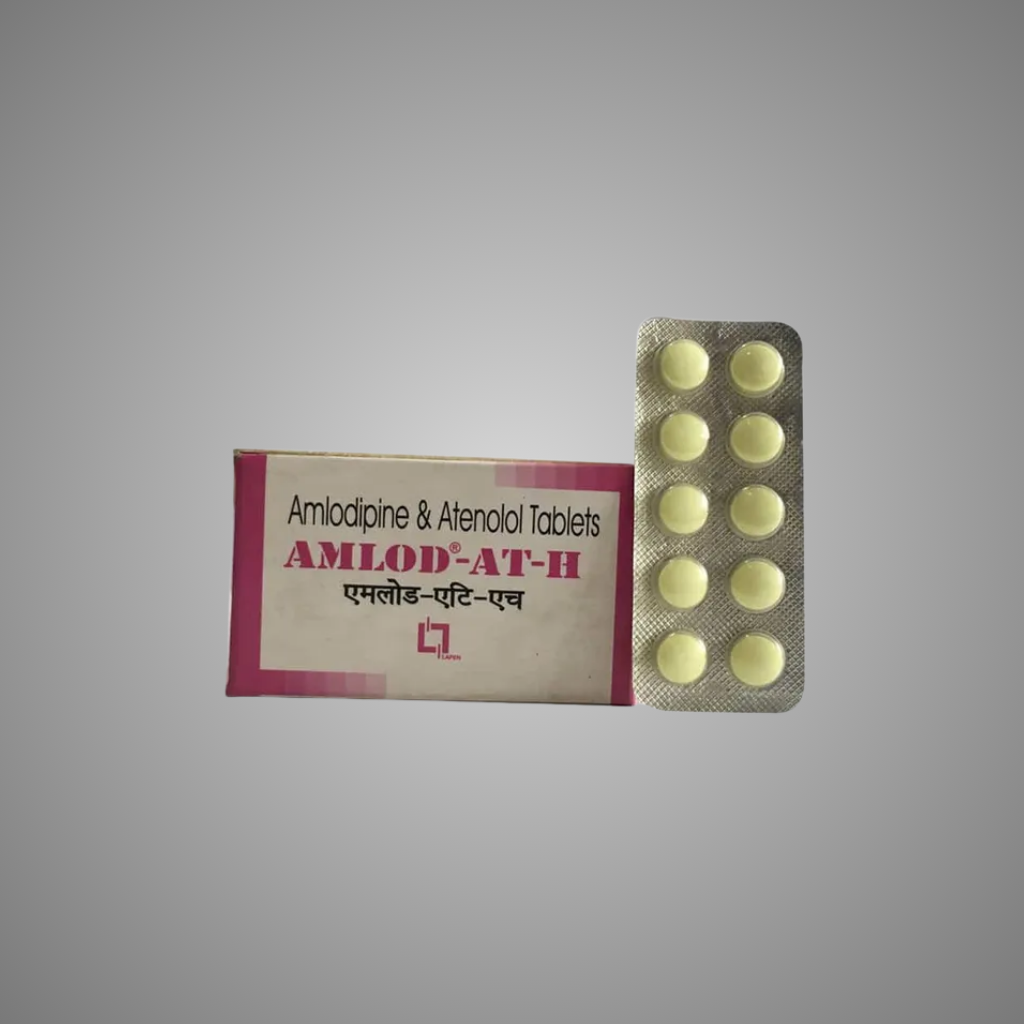Amlod AT
- Hypertension (High Blood Pressure): To lower elevated blood pressure, reducing the risk of heart attack, stroke, and kidney problems.
- Angina (Heart-Related Chest Pain): To prevent and manage various types of angina, including chronic stable angina and vasospastic (Prinzmetal’s or variant) angina, by improving blood flow and oxygen to the heart.
- Coronary Artery Disease (CAD): To reduce the risk of hospitalization for angina and the need for coronary revascularization procedures in patients with documented CAD.
₨144.00
Ask about productDescription
Amlod AT is a medication that typically contains amlodipine, a calcium channel blocker. Some formulations may also include atenolol, a beta-blocker, making it a combination drug.
Here’s a long description and short uses:
Long Description of Amlod AT (focusing on Amlodipine, as it’s the primary component):
Amlodipine, the active ingredient in Amlod AT, belongs to a class of medications known as calcium channel blockers. It works by relaxing and widening blood vessels (vasodilation). This action has several beneficial effects on the cardiovascular system:
- Lowers blood pressure: By relaxing the blood vessels, amlodipine reduces the resistance that the heart encounters when pumping blood. This makes it easier for blood to flow throughout the body, thereby lowering high blood pressure (hypertension).
- Reduces workload on the heart: With relaxed blood vessels and lower blood pressure, the heart doesn’t have to work as hard to pump blood. This reduced workload is particularly beneficial for individuals with certain heart conditions.
- Improves blood and oxygen supply to the heart: By widening the coronary arteries, amlodipine increases the flow of blood and oxygen to the heart muscle. This helps to prevent and relieve chest pain (angina).
Amlod AT is typically taken orally, usually once a day, with or without food. It’s designed for long-term treatment, and consistent use at the same time each day is recommended for optimal effectiveness. While some effects may be noticed within hours, the full blood pressure-lowering effect may take a few days to weeks to become apparent. It’s crucial to continue taking Amlod AT as prescribed, even if you feel well, as high blood pressure often has no symptoms, and abruptly stopping the medication can lead to a sudden increase in blood pressure and potentially serious complications like heart attack or stroke.
Common side effects of amlodipine can include swelling of the ankles or feet (edema), headache, dizziness, fatigue, nausea, and abdominal pain. More serious side effects are rare but can include severe stomach pain (pancreatitis), liver problems (yellowing of skin/eyes), or worsening chest pain. If Amlod AT contains atenolol, additional side effects related to beta-blockers, such as slow heart rate and shortness of breath, might also occur.
Additional information
| form | PACK |
|---|






Reviews
There are no reviews yet.